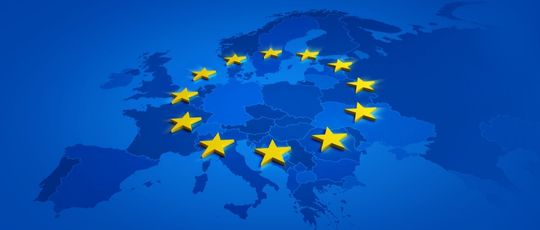For WorldatWork Members
- Navigating Living Wages in Total Rewards, Workspan Magazine article
- Multi-State Laws Comparison Tool, tool
- How to Communicate Pay Frequency Changes, Workspan Magazine article
- Salary Budget Survey, research
For Everyone
More than 20 states and another 50 cities and counties in the U.S. increased their minimum-wage rates on Jan. 1.
These latest wage hikes are part of a recent trend showing an increased volume, pace and magnitude of change in the compensation space, said Erika Johnson, the director of work, rewards and career at advisory firm WTW.
The federal minimum wage has remained at $7.25 per hour since July 2009, the last time Congress raised it. As a result, according to Johnson, “states and localities are, more than ever, enacting their own minimum-wage legislation, complicating compensation program planning and daily administration for multi-state employers.”
Access bonus Workspan Daily Plus+ content on this subject:
In a post-COVID-19 world where many employers maintain remote-first or hybrid working models, employees are no longer tied to a fixed office location.
“This adds complexity in tracking employee work locations and meeting local compliance obligations for minimum wage,” Johnson said.
Employers with large nonexempt populations in sectors like hospitality, healthcare and retail may often have employees assigned to fixed locations, thereby minimizing compliance burdens.
But still, Johnson added, “Compensation teams are definitely spending more time and energy on minimum-wage changes than they have in the past.”
Here’s what you need to know to get maximum understanding on minimum-wage rates for 2025.
Where Wages Are Rising
Twenty-one states raised their per-hour minimum-wage rate on Jan. 1:
- Alaska: $11.91 (increased from $11.73)
- Arizona: $14.70 (from $14.35)
- California: $16.50 (from $16)
- Colorado: $14.81 (from $14.42)
- Connecticut: $16.35 (from $15.69)
- Delaware: $15 (from $13.25)
- Illinois: $15 (from $14)
- Maine: $14.65 (from $14.15)
- Michigan: $10.56 (from $10.33)
- Minnesota: $11.13 (from $10.85 for large employers, $8.85 for small employers)
- Missouri: $13.75 (from $12.30)
- Montana: $10.55 (from $10.30)
- Nebraska: $13.50 (from $12)
- New Jersey: $15.49 for most employers (from $15.13 for most employers)
- New York: $15.50 (from $15)
- Ohio: $10.70 (from $10.45)
- Rhode Island: $15 (from $14)
- South Dakota: $11.50 (from $11.20)
- Vermont: $14.01 (from $13.67)
- Virginia: $12.41 (from $12)
- Washington: $16.28 raising to $16.66 (from $16.28)
Changes also occurred at the city level in several states:
- Arizona: Flagstaff, Tucson
- California: Belmont, Burlingame, Cupertino, Daly City, East Palo Alto, El Cerrito, Foster City, Half Moon Bay, Hayward, Long Beach, Los Altos, Menlo Park, Mountain View, Novato, Oakland, Palo Alto, Petaluma, Redwood City, Richmond, San Carlos, San Diego, San Jose, San Mateo, Santa Clara, Santa Rosa, Sonoma, South San Francisco, Sunnyvale, West Hollywood
- Colorado: Boulder, Denver, Edgewater
- Maine: Portland, Rockland
- Minnesota: St. Paul
- New Mexico: Albuquerque, Las Cruces
- New York: New York City (including a separate one for Long Island)
- Washington: Bellingham, Renton, Seattle, SeaTac, Tukwila
In addition, several countries enacted wage changes:
- California: San Mateo County
- Colorado: Boulder County (unincorporated areas only)
- Maryland: Howard County
- New York: Westchester
- Washington: King County
Picking Up the Pace
In addition to one-time bumps, some states and localities are also implementing multi-year, progressive rate escalations or tying rate increases to economic metrics like the Consumer Price Index, Johnson said.
“Historically, the pace of minimum wage changes was much slower, with significant changes being rare and easier to manage,” she said. “Now, total rewards professionals must be continuously vigilant about upcoming increases as the work is never really ‘done.’”
Some of these coming changes, according to Johnson, are substantial and require careful planning.
A typical minimum wage increase may be 2% and 3%, she said, while a typical employer salary budget may be between 3% and 4%.
“Therefore, many employers have found it relatively easy to accommodate changes within planned budgets,” Johnson said.
However, she added, as states and localities adopt more aggressive minimum wage policies to address living-wage concerns and poverty, as well as to stimulate economic growth through increased consumer spending, the changes can be significant and outpace typical salary budgets.
“In 2025, Delaware will see a 13% change on January 1, and Missouri will experience a 12% change,” Johnson said. “These double-digit changes can be quite costly for some employers, both in base pay rates, but also overtime expenses, differentials/premiums or other pay that is tied to hourly rates.”
Additionally, with significant upward pressure on the wage floor, organizations may also face undesired wage compression, where newer or less experienced employees are paid similarly to more tenured employees or supervisors.
Employers often find that the total costs extend beyond the initial wage change, Johnson said, “as adjustments to pay levels for other roles may be necessary to maintain internal equity and alignment with established compensation philosophies.”
While minimum-wage increases can provide employees greater purchasing power, these changes can also have a downstream negative impact on organizations, said Justin Sun, the senior manager of global rewards for Expedia Group.
“As HR practitioners, it's important to ensure your compensation programs and benefit offerings account for increases to minimum wage,” said Sun. “For example, compensation ranges and wage charts should take into account pay rate changes, and employers may need to cut benefits in some areas to balance the increase in labor costs.”
Impacting Pay Transparency
External legislative and internal employee pressure for pay transparency is further complicating the minimum-wage pay picture, said James King, a principal consultant for talent and rewards at Mercer.
While organizations may choose different approaches to handle the minimum-wage changes, King said organizations need to be as transparent as possible with workers and job candidates on pay matters because it can reap dividends later.
“With growing interest in transparency, employees are discussing compensation more than ever before,” he said. “A thoughtful approach to pay adjustments can help maintain employee satisfaction.”
Editor’s Note: Additional Content
For more information and resources related to this article, see the pages below, which offer quick access to all WorldatWork content on these topics:







